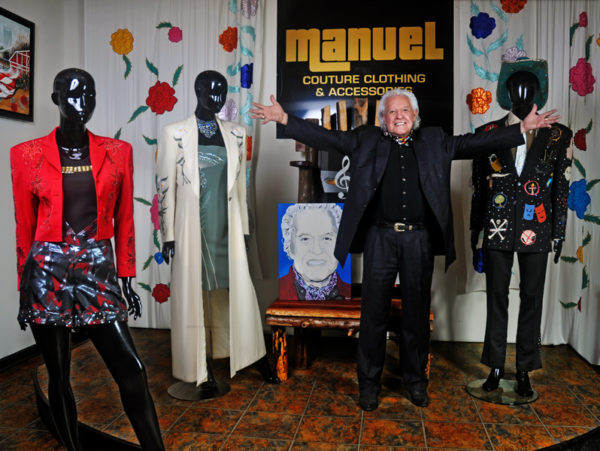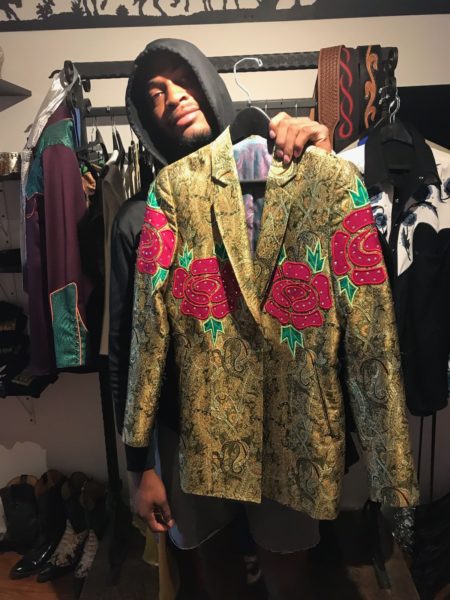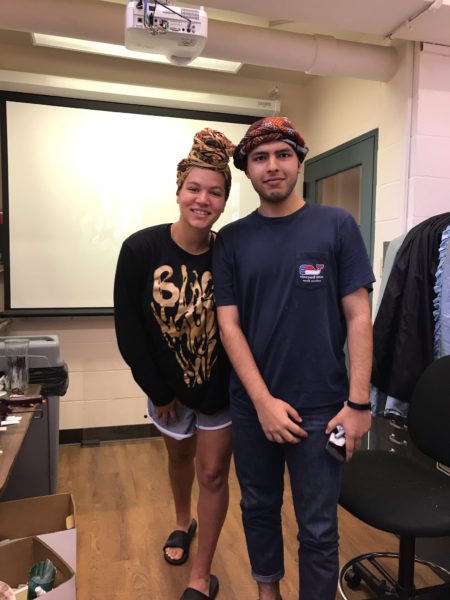by Amy Wolf
Students in a Vanderbilt class took a unique hands-on look into the history of fashion and sustainability with the help of Nashville fashion design icon Manuel Cuevas. Manuel is best known for creating couture “rhinestone cowboy” designs for Elvis, the Beatles, Johnny Cash, Dolly Parton, Kid Rock and others.

“Manuel likes to tell the students that he hasn’t worked a day in his life because he so sincerely loves what he does,” said Alexandra Sargent Capps, principal senior lecturer of theatre and manager of the Vanderbilt Costume Shop.

The students saw how Manuel represents “slow fashion,” the idea of making clothing locally, often by hand, with high-quality fabrics designed to last for a long time.

Dangers of ‘fast fashion’
In comparison to Manuel’s methods, the students studied the impact that “fast fashion” has on society and the environment. “Fast fashion” is inexpensive clothing produced rapidly by mass-market retailers in response to the latest trends, using production processes that often are considered abusive toward the environment and the workers who create it.

“My biggest takeaway from this class was the idea of fashion sustainability and the impacts of our throw-away culture,” said student Bridget Morris of Baskin Ridge, New Jersey, who gave a presentation on promoting garment workers’ rights and environmental sustainability.
“I now have a better idea of where my clothes come from and who’s making them,” added student Jess Orkin from Nashville. “So when I buy super cheap stuff off the internet, I know that it’s also directly affecting people’s water and land, and workers are often having to make the clothes in really inhumane conditions.”
Wearing history
As part of the class, students looked at how historical figures have influenced fashion today. Basketball student-athlete Kaleigh Clemons-Green demonstrated how she transforms her workout shirt into a headscarf that references the powerful ancient Egyptian queen Nefertiti.

“There is an empowerment tone that we want to have because we live in a sexist society, especially in sports. So we want to draw from Queen Nefertiti for strength,” Clemons-Green said.
She pointed out that her research found that many women, especially female athletes, pose in stances resembling Nefertiti.
Sustainable and historical fashion
Sargent Capps combined the themes of sustainable and historical fashion in her own exhibit at the Parthenon in Nashville’s Centennial Park. Sargent Capps and students from a fashion sustainability class designed gowns using recycled materials and created posters that demonstrated how the sustainable practices modeled by the ancient Greeks never go out of style.
“I wanted to give the students an immersive experience in fashion history through the lens of design theory, design practice and the sustainable fashion movement,” Sargent Capps said.

- Learn more about the fashion classes and similar classes taught at Vanderbilt through the Vanderbilt Theatre Department.
Video by Pat Slattery and Amy Wolf.